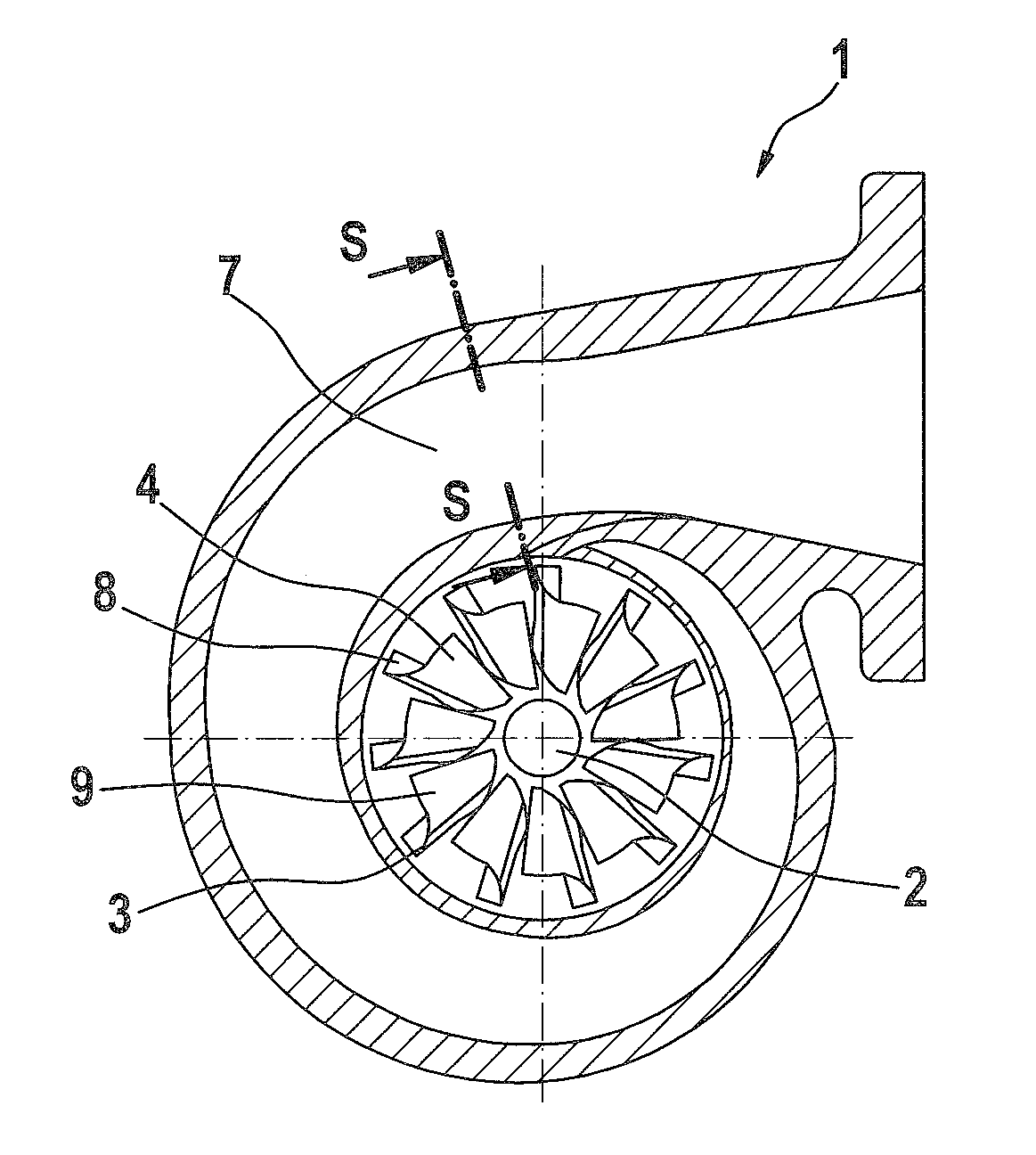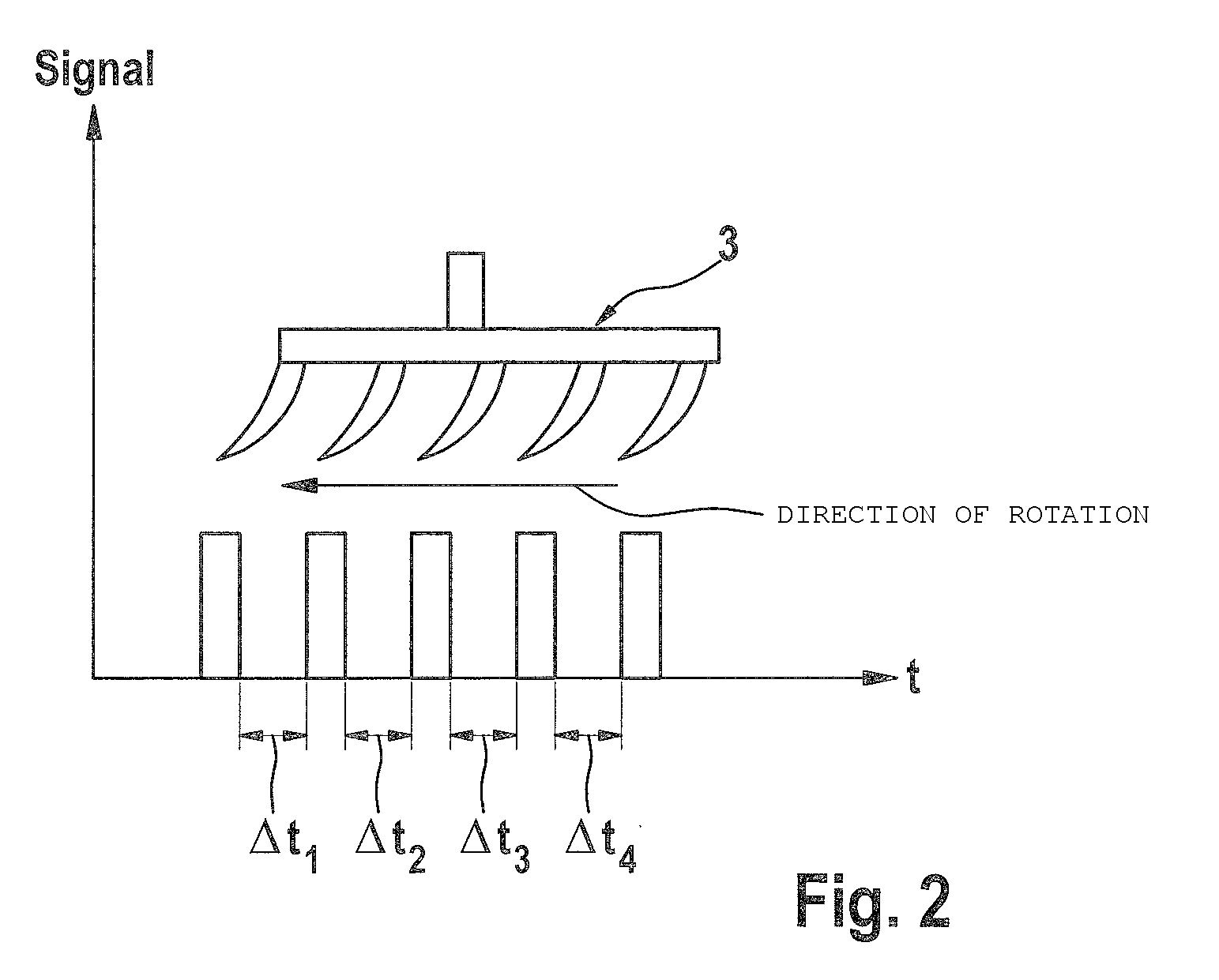Method and device for determining one or more rotational speeds of a turbocharging device, in particular for an internal combustion engine
a turbocharging device and internal combustion engine technology, applied in the direction of electrical control, apparatus for force/torque/work measurement, instruments, etc., can solve the problems of blade deformation of the compressor impeller blade, greater torque and power at the same volume, and greater charge in the combustion chamber, so as to achieve reliable and robust determination of rotational speed
- Summary
- Abstract
- Description
- Claims
- Application Information
AI Technical Summary
Benefits of technology
Problems solved by technology
Method used
Image
Examples
Embodiment Construction
[0054]The following specific embodiments are described on the basis of a turbocharger for automotive applications. However, the following description may be applied to any type of compressor in which a medium is drawn in by a compressor impeller using blades and is compressed to a higher pressure.
[0055]FIG. 1a shows a cross-sectional diagram through a turbocharger 1 at a right angle to an axial direction of a shaft 2, which is rotatably mounted in a turbocharger housing. FIG. 1b shows a sectional diagram along line S-S of FIG. 1a in the direction of the arrow.
[0056]Turbocharger 1 has a compressor impeller 3 having blades 4 and situated on shaft 2. Air is drawn in via an intake opening 5 in the axial direction of shaft 2 by rotation of compressor impeller 3 in turbocharger 1, is compressed by blades 4 of compressor impeller 3 and ejected via an exhaust port 7, which is situated in a spiral pattern around compressor impeller 3.
[0057]Compressor impeller 3 has a blade web 8 for each bla...
PUM
 Login to View More
Login to View More Abstract
Description
Claims
Application Information
 Login to View More
Login to View More - R&D
- Intellectual Property
- Life Sciences
- Materials
- Tech Scout
- Unparalleled Data Quality
- Higher Quality Content
- 60% Fewer Hallucinations
Browse by: Latest US Patents, China's latest patents, Technical Efficacy Thesaurus, Application Domain, Technology Topic, Popular Technical Reports.
© 2025 PatSnap. All rights reserved.Legal|Privacy policy|Modern Slavery Act Transparency Statement|Sitemap|About US| Contact US: help@patsnap.com



